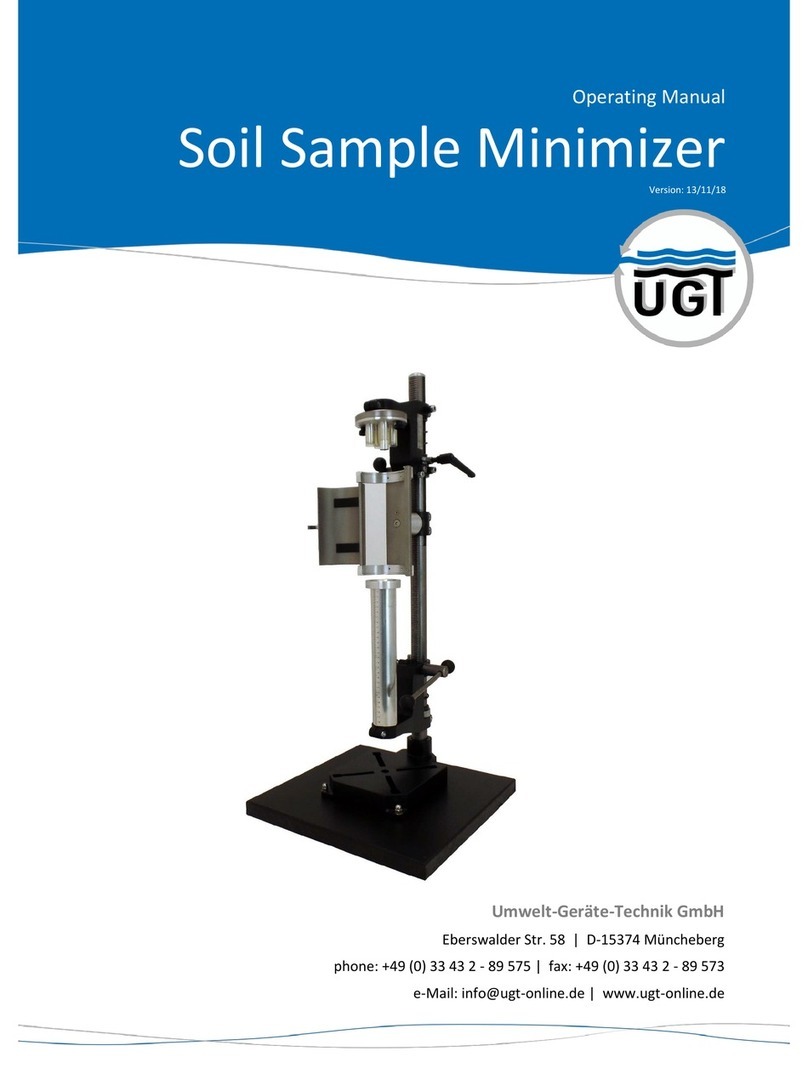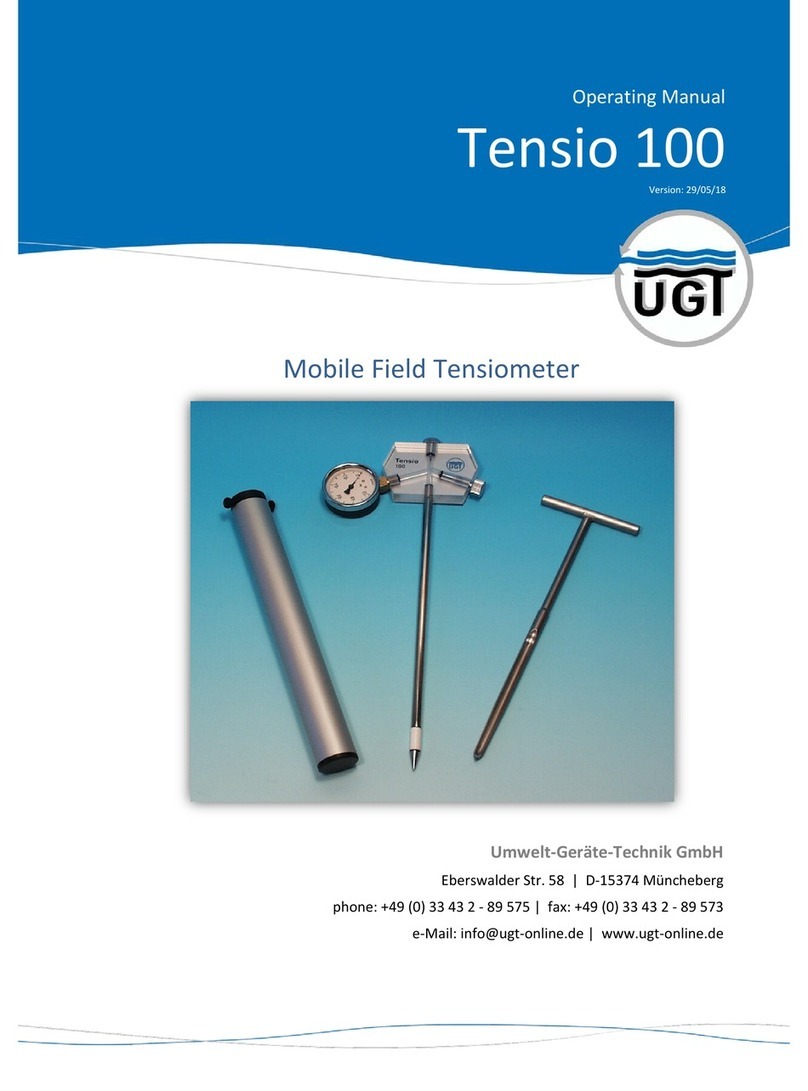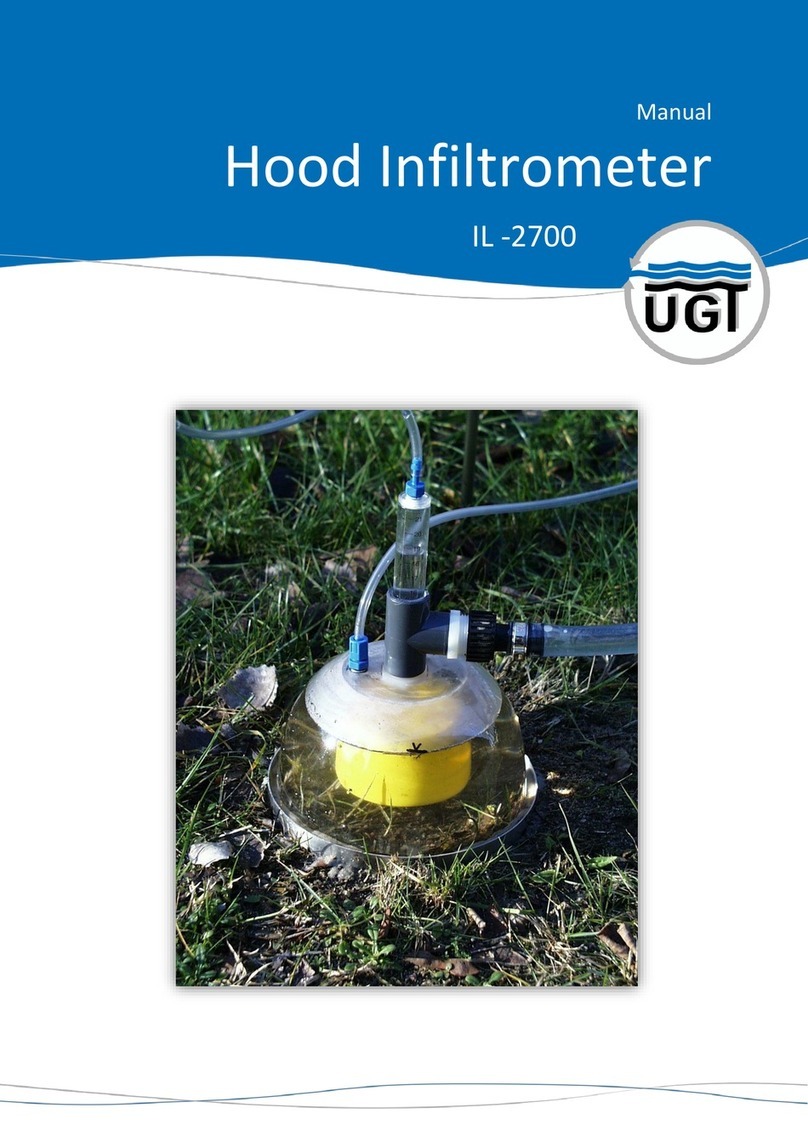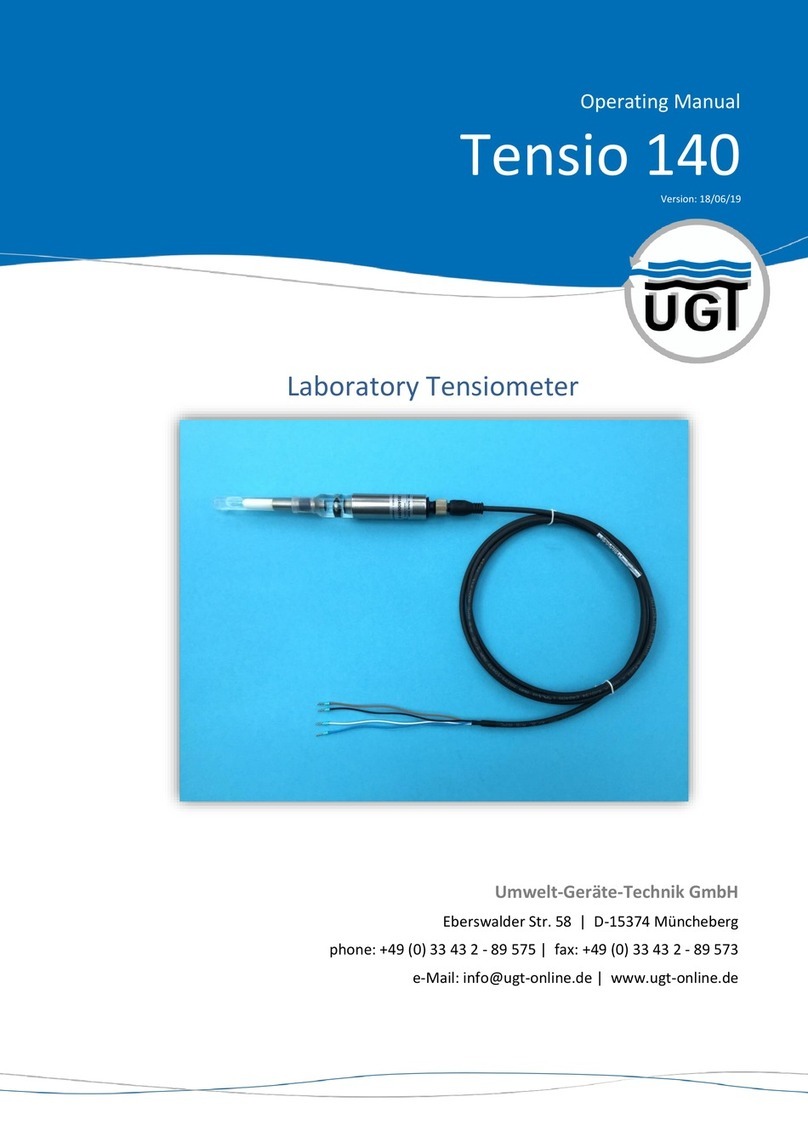Umwelt-Geräte-Technik GmbH | Eberswalder Str. 58 | D-15374 Müncheberg | phone: +49 (0) 33 43 2 - 89 575 | www.ugt-online.de Page 2 of 29
Content
1. Introduction...................................................................................................................................... 3
1.1. Safety Instructions.................................................................................................................5
1.2. Scope of Delivery and optional accessories.............................................................................6
2. General Information ......................................................................................................................... 7
2.1. What are Tensiometers? / What is Tension? ..........................................................................7
2.2. What are Tensiometers used for?...........................................................................................8
2.3. How Does a Tensiometer Work? ............................................................................................8
2.4. Product versions..................................................................................................................10
2.5. Technical data......................................................................................................................10
3. Structure and basic functions ......................................................................................................... 11
3.1. structure..............................................................................................................................11
3.2. How to Operate the Full Range Tensiometer? ......................................................................12
4. Installation of the Full Range Tensiometer..................................................................................... 13
4.1. Preparation and Storage ......................................................................................................13
4.2. Installation of the Full Range Tensiometer ...........................................................................14
4.3. Interface and power supply..................................................................................................17
5. Data transfer ................................................................................................................................... 19
5.1. Measurement channels, bus addresses and data polling.......................................................19
5.2. Transformation digital signal in measurement value ............................................................25
6. Maintenance ................................................................................................................................... 27
6.1. Rezero of the Full Range Tensiometer ..................................................................................28































